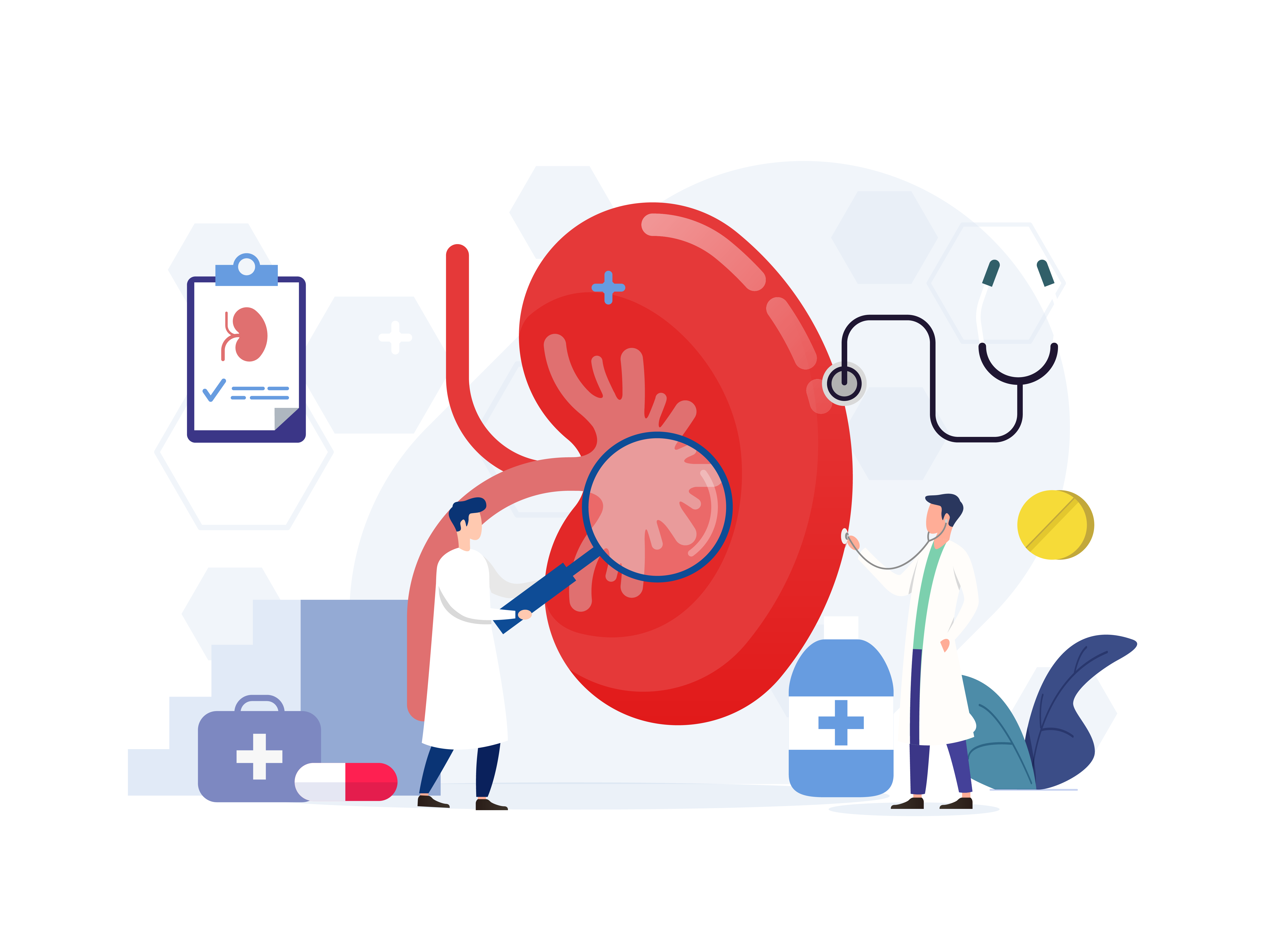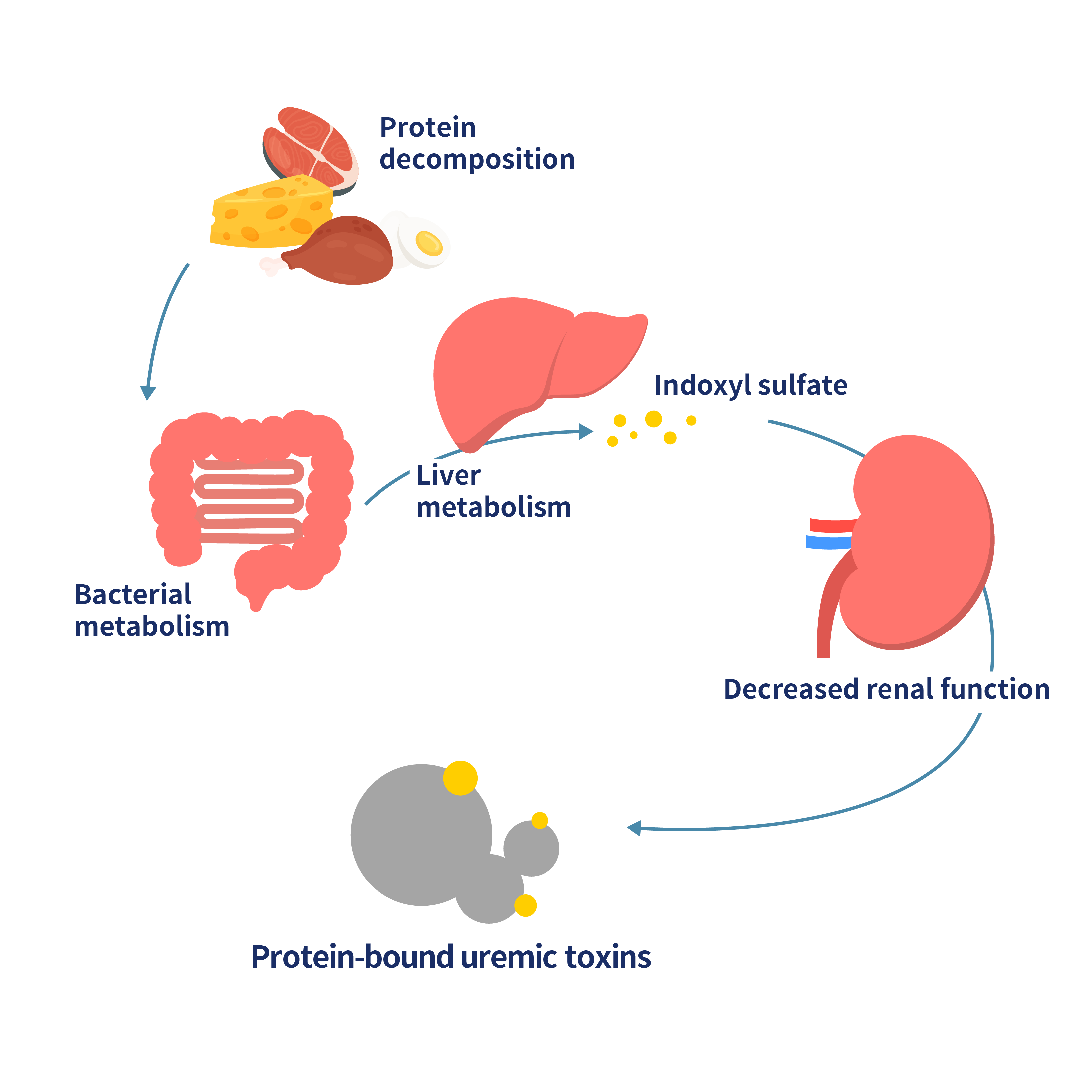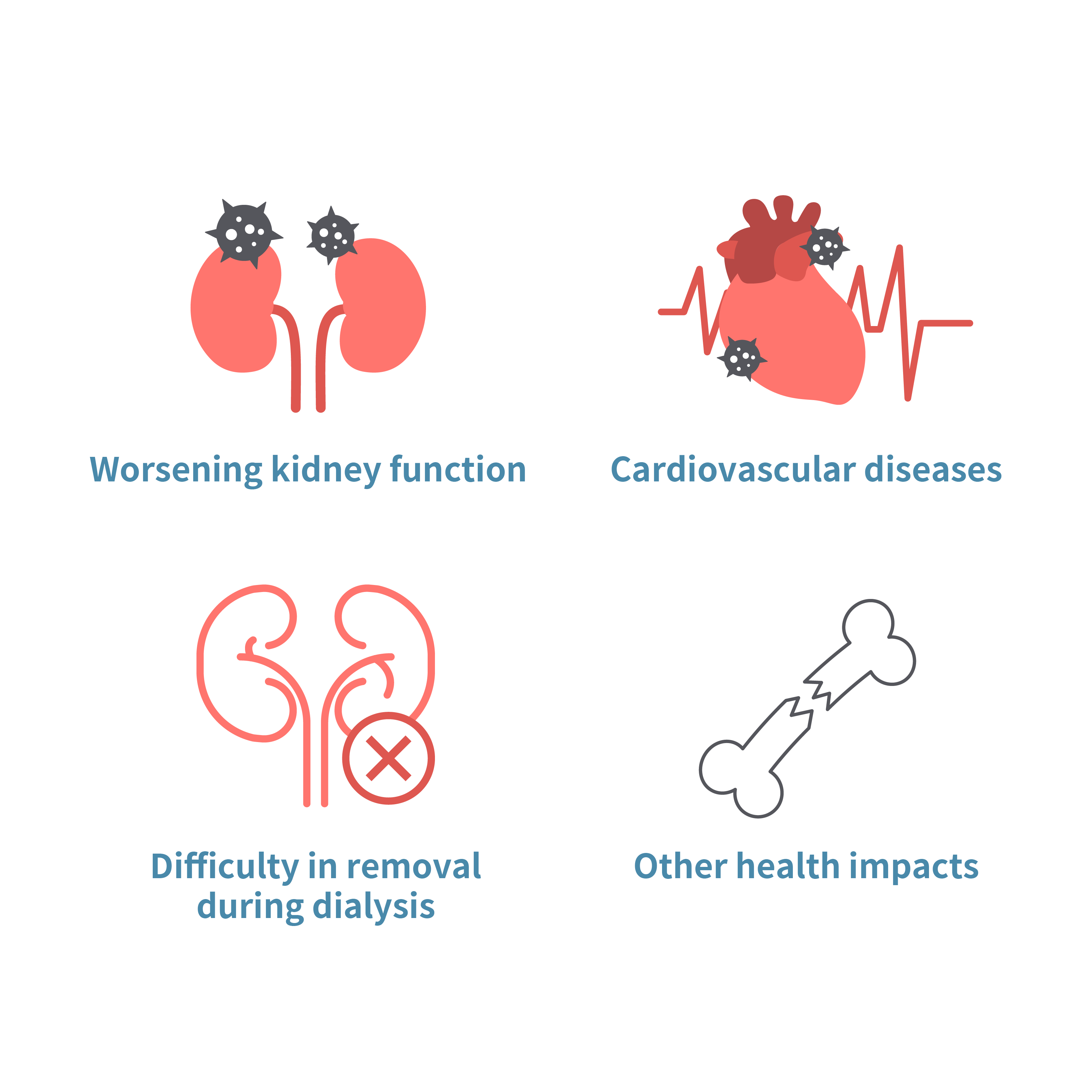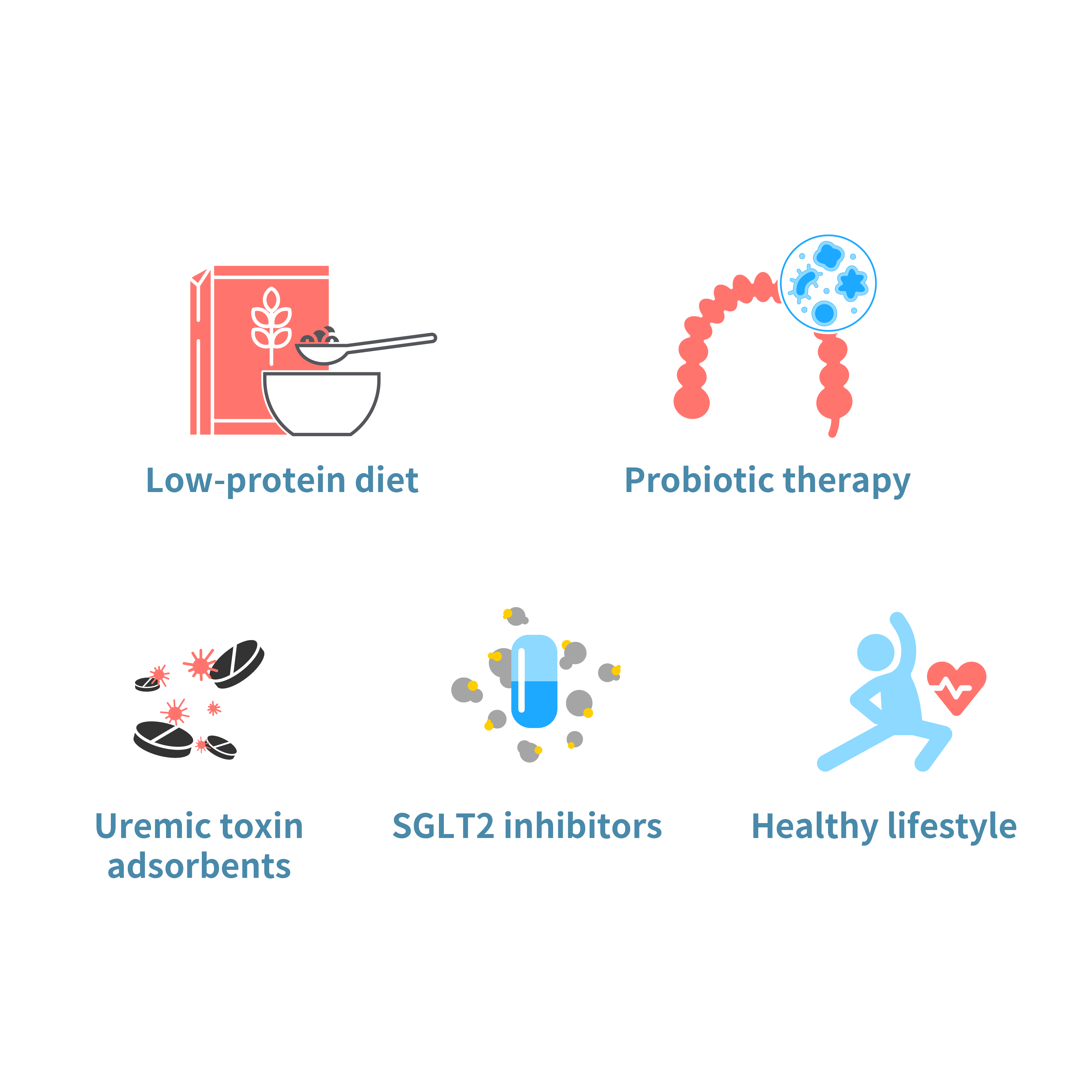 Uremic toxins are critical risk factors in the progression of chronic kidney disease (CKD). As kidney function declines, these metabolic waste products accumulate in the body due to impaired excretion, causing a wide range of health issues. The presence of uremic toxins is a primary driver of kidney function deterioration. Over 1,000 types of uremic toxins have been identified, which are broadly classified into three main categories.
Uremic toxins are critical risk factors in the progression of chronic kidney disease (CKD). As kidney function declines, these metabolic waste products accumulate in the body due to impaired excretion, causing a wide range of health issues. The presence of uremic toxins is a primary driver of kidney function deterioration. Over 1,000 types of uremic toxins have been identified, which are broadly classified into three main categories.
Three Categories of Uremic Toxins
- Water-Soluble Uremic Toxins
These toxins dissolve in the bloodstream and can be effectively removed through hemodialysis or peritoneal dialysis. Oxalic acid is an example of this category.
- Protein-Bound Uremic Toxins
These toxins bind to proteins in the blood, forming complexes that are difficult to remove during dialysis. Indoxyl sulfate and p-cresol are prominent examples of protein-bound uremic toxins, known to be particularly harmful to kidney health and other organs.
- Middle and Large Molecule Uremic Toxins
Larger molecules, such as interleukin-6 (IL-6) and β2-microglobulin, are more challenging to clear and can damage vascular endothelial cells. Their long-term accumulation may lead to vascular calcification and related diseases.
Among these categories, protein-bound uremic toxins pose the greatest threat to CKD patients due to their resistance to dialysis. Indoxyl sulfate, in particular, has received significant attention because of its toxic effects on both the kidneys and other organs.
What Is Indoxyl Sulfate?

Indoxyl sulfate is a protein-bound uremic toxin generated through the following process:
- Protein Breakdown: The gut breaks down proteins from food into tryptophan.
- Bacterial Metabolism: Tryptophan is converted to indole by intestinal bacteria.
- Liver Metabolism: Indole is absorbed into the liver, where it undergoes sulfation to form indoxyl sulfate, which then enters the bloodstream.
- Toxic Effects: Indoxyl sulfate binds to albumin in the blood, making it difficult for the kidneys to excrete.
Impact of Indoxyl Sulfate on the Body

- Worsening Kidney Function
Indoxyl sulfate induces oxidative stress and inflammatory responses in kidney cells, promoting kidney fibrosis and glomerulosclerosis, which accelerate the decline of kidney function.
- Cardiovascular Disease
Elevated levels of indoxyl sulfate impair vascular endothelial function, increasing the risk of arteriosclerosis and contributing to cardiovascular disease, a leading cause of death in CKD patients.
- Dialysis Challenges
Because indoxyl sulfate binds tightly to albumin and has a relatively large molecular size, it is difficult to remove through dialysis, leading to its continued accumulation in CKD patients.
- Other Health Impacts
Indoxyl sulfate may inhibit bone formation, contributing to osteoporosis. It also plays a role in muscle wasting and neurocognitive decline, affecting skeletal muscle health and brain function.
Strategies to Reduce Indoxyl Sulfate Accumulation

- Low-Protein Diet
Reducing dietary protein intake decreases the production of tryptophan, which helps reduce the formation of indoxyl sulfate. CKD patients should follow a dietitian’s recommendations to maintain a low-protein diet that meets their nutritional needs without overburdening their kidneys.
- Probiotic Therapy
Probiotics specifically designed for kidney health can help regulate gut microbiota and reduce the production of harmful metabolites like indole. Certain probiotic strains have demonstrated effectiveness in reducing protein-bound uremic toxins in clinical studies. However, patients should consult a physician or dietitian before using supplements to avoid falling for exaggerated marketing claims.
- Uremic Toxin Adsorbents
Some adsorbents, such as activated charcoal, can bind to uremic toxin precursors in the gut, preventing them from entering the bloodstream. However, these products should only be used under medical supervision to avoid potential side effects.
- SGLT2 Inhibitors
SGLT2 inhibitors are medications that reduce glomerular pressure, have anti-inflammatory effects, and may help promote the clearance of indoxyl sulfate, reducing its toxic impact on the kidneys.
- Adopting a Healthy Lifestyle
Maintaining a regular exercise routine, quitting smoking, managing blood pressure and blood sugar levels, and regularly monitoring kidney function can slow kidney disease progression and improve overall health.
Conclusion: Protecting Kidney Health Begins with Managing Uremic Toxins
Among the many uremic toxins, indoxyl sulfate stands out as one of the most harmful toxins affecting CKD patients. Its accumulation can significantly impact both kidney function and overall health. However, through a combination of strategies—including a low-protein diet, probiotic therapy, and appropriate medications—patients can reduce toxin buildup and improve their health outcomes.
For CKD patients, regular monitoring of uremic toxin levels, close collaboration with healthcare professionals, and adopting proactive health management strategies are essential steps to slowing disease progression and improving quality of life.
Protect your kidneys—start managing uremic toxins today!
